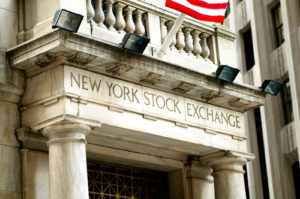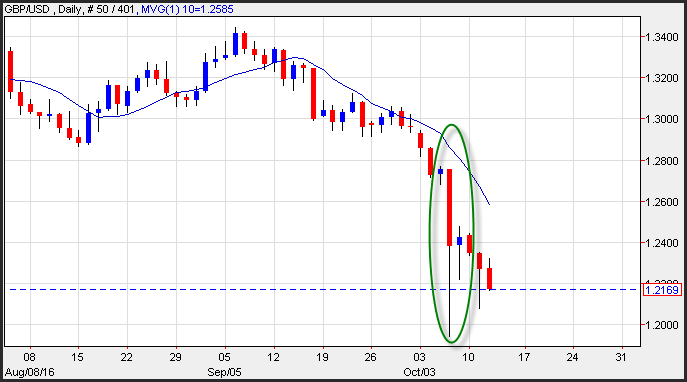 High frequency trading systems enhance the liquidity of the foreign exchange market, but in many cases this benefit comes with a cost. Given the assumption that the forex market is one of the truest forms of capitalism, it is important to have a process that generates revenue to traders that are willing to provide liquidity. The forex markets have experienced the dangers of allowing high frequency trading systems, as adverse market conditions are met with enormous volatility, that can cause significant losses.
High frequency trading systems enhance the liquidity of the foreign exchange market, but in many cases this benefit comes with a cost. Given the assumption that the forex market is one of the truest forms of capitalism, it is important to have a process that generates revenue to traders that are willing to provide liquidity. The forex markets have experienced the dangers of allowing high frequency trading systems, as adverse market conditions are met with enormous volatility, that can cause significant losses.
For example, the 6% daily range in the GBP that occurred on October 5, 2016 is an example of a flash crash that was generated by high frequency forex trading. In this article, we will discuss how HFTs can be helpful and harmful for the forex market trader.
Liquidity in the Financial Markets
What makes the financial markets efficient is the underlying belief that you can experience liquidity in nearly every tradable market. Liquidity is a benefit to investors, and it goes hand in hand with active trading strategies and the ability to exercise efficient risk management. Most traders whether they are trading forex products, equities or even commodities benefit from this liquidity because it allows them to quickly enter and exit their positions in the market with minimal slippage.
Liquidity provides the framework for your money management, as you cannot determine your actual risk unless you can execute the intended exit at your predetermined price.
Slippage in the Forex Market
When you trade liquid currency pairs such as the USD/JPY, you can design a strategy that is based on a risk versus reward profile. Your strategy could entail risking 1x on a trade for every 2x you are trying to make. When you design your strategy you would likely incorporate brokerage costs and slippage into your strategy.
Slippage is a term that describes the change in the price of a security that occurs when you transact. Even with the most liquid currency pairs such as the USD/JPY experience slippage. With a liquid currency pair, you can assume that the slippage during normal periods will be the difference between the bid price and the offer price. Obviously if you are trading in very large increments, the slippage can be greater than the bid offer spread. Additionally, if you are trading during illiquid hours, the slippage could also be larger than normal.
If a currency pair is opaque, such as the IDR/JPY (Indonesian Rupiah versus the Yen), then you cannot assume that you will be able to exit your position, with a normal bid offer spread. You will need to incorporate a larger amount for slippage which in turn might eliminate the profits you are forecasting from your trading strategy.
The benefits of trading the forex markets with liquidity comes with a cost. The cost of participating in a market that has adequate liquidity is that there are many traders who are looking to benefit from creating that liquidity. Capturing most of the headlines these days are the high frequency traders who provide liquidity but also take their pound of flesh for providing this luxury.
History of Market Liquidity
Prior to discussing the pros and cons of high frequency trading in the forex market, it is important to track the roots of some of the earliest liquidity providers. Market makers have been around for more than a century; as specialists on the New York Stock Exchange, these traders were responsible for making sure a proper bid and offer were provided for the stocks they handled.
Based on the supply and demand for a specific stock, the specialist was responsible for finding a fair market price. The specialist would make sure that if a customer order to buy a security was above the best offer, that the transaction was filled at the lowest offer.
As floor trading was replaced by computerized algorithms, the process of providing liquidity switched from humans to machines. This scenario also occurred in the forex markets where large bank dealers were replaced with smaller computerized algorithms. Although in many cases a human dealer is still needed especially for orders that are non-conventional, many liquidity providers in the capital market structure are computerized algorithms that are looking to exploit opportunities and provide liquidity.
It is important to understand that the underlying reason high frequency traders exist is the markets present opportunities to quickly turn a profit and therefore in many cases the algorithms will provide liquidity by consistently placing bids and offers in multiple currency pairs.
Creating an Ongoing Auction
High frequency traders are heavy participants in the electronic auctions. An auction brings together buyers and sellers and the process helps explore a range of values until a fair value is discovered. So why is understanding an auction important for those trading the capital markets? The answer is that financial instruments, such as currency pairs, utilize auctions to trade. Every day buyers and sellers around the world gather in a global electronic marketplace and continuously evaluate the price of an asset in an effort to find the current value at that specific point in time. The more bids and offers involved in an auction, the more likely it is for the auction process to achieve fair value.
High Frequency Trading Strategies
High frequency trading strategies describe an algorithm that is trading thousands of times a day, to capture inefficiencies in the exchange rate of a currency pair or some other financial instrument. The concept is a relative term, describing how market participants use technology to gain information, and act upon it, in advance of the rest of the market. In essence, high frequency traders are front running your order. If the price of a currency pair is off by even half of a pip, the high frequency trader will attempt to capture this inefficiency.
High frequency traders initially appeared onto the equity market scene. New regulation allowed electronic exchanges to compete with one another, which left the door open for high frequency traders to step in and search for discrepancies in prices. High frequency traders rely on extremely low latencies and use high speed connections in conjunction with trading algorithms to exploit inefficiencies created by these exchanges.
Many HFT strategies revolve around searching for and sniffing out institutional order flows, by going through the multitude of electronic exchanges available to trade securities. These algorithms would detect a trade and attempt to transact the same trade before the order was filled at another electronic exchange. These algorithms are front running many securities orders and are predicated on the idea that speed was of the essence.
Speed has become so important to the success of a high frequency operation, that these businesses invest enormous sums of money into building their low latency infrastructure. High frequency traders target low latency machinery in an effort to find the fastest computers available. For a high frequency trader, finding the path of least resistance in communication is the key to successful arbitrage. Additionally, the proximity of a high frequency trader’s black box to an exchange will reduce or increase the speed at which a transaction is recognized.
So, a proximity war, among high frequency firms, has emerged and created competition for real-estate around a physical exchange location, especially in the equity space.
Why High Frequency Trading Expanded ?
In 2007 the National Market System (NMS) altered the regulations increasing the transparency for an automated visible market. The new regulations were implemented to enhance efficient price discovery, but as a result, created opportunities for multiple venues to enter the market competing for trade volume and generate fragmented liquidity.
High frequency trading has permeated many aspects of the capital markets. HFT strategies have migrated from stocks to bonds, currencies and commodities. High frequency traders in forex generate revenue from attempting to capture small changes or the difference between the bid / offer spreads in other locations. Many forex brokers have been impacted by high frequency operations which can use superior technology to capture these discrepancies.
Currency futures and ETF’s also help provide opportunities for high frequency currency traders. Algorithms are constantly evaluating the price of a futures contract relative to the forex forward market and locking in gains from price discrepancies. Many retail investors also use currency ETF’s to take positions in the currency markets and these products also provide opportunities to capture small inefficiencies relative to the spot currency market.
 High Frequency Traders Help Generate Liquidity
High Frequency Traders Help Generate Liquidity
When forex traders transact in the currency market they generally must pay the difference between where a market maker is willing to sell a currency pair, and where the market maker is willing to buy the currency pair. This is referred to as the bid/offer spread. This spread represents the compensation a market maker receives for taking on the position you are looking to transact.
The more volatile the underlying asset, the wider the bid-ask spread. By consistently trading in a market, HFT systems narrow the bid-offer spread and protect market makers by providing constant liquidity. This interaction by high frequency traders helps reduce slippage and transaction costs overall.
In addition, Liquidity goes hand in hand with the Exchanges. For the exchanges to be successful they need liquidity and hence there is a demand for high frequency traders. The partnership is key to the success of both entities.
The Costs of HFT Activity in the Foreign Exchange Market
High frequency algorithmic trading employ strategies that are fully aware of millions of transactions. If you are attempting to employ your own arbitrage strategy to take advantage of price inefficiencies, you will find it difficult to generate revenue.
For traders that are attempting to purchase a currency pair at a certain price, your entry price can be altered by even one transaction. If you are attempting to dollar cost average transactions, your strategy could be altered by multiple transactions following your first transaction.
Each one of your trades could set off a cascade of additional trades that makes entry into a currency pair difficult. For example, if you purchase the USD/JPY, but there is an arbitrage opportunity available in the futures and ETF market, your one transaction could set off an additional 3 transactions. At the same time the broker you purchased the currency pair from also has to cover their position, which could set off an additional 3-transactions. If your plan was to purchase the USD/JPY at 100.50 and then 100.40, you could find the market running away from you after your very first transaction.
Another cost of HFT currency trading is the speed at which markets move, when an impetus generates volatility. A perfect example of this was the huge move in the GBP/USD following comments in October 2016 from new U.K. Prime Minister May, that looked like the U.K. and the EU were headed to a contentious break up. It was clear from the reaction of the market that these comments were unexpected and set off a cascade of reactions which were exaggerated by high frequency traders.
Historically the daily range of the Pound / Dollar is less than 200 pips which is why the 800 pip range that day caught the attention of market participants and shined the light on high frequency traders who helped generated a large fluctuation in prices. See image below:

When everyone heads for the exits at the same time, high frequency traders will attempt to take advantage of the price inefficiencies, triggering stops across the globe all at one time. The change in price could also greatly reduce liquidity.
The problem with these types of movements is that many times a forex broker will not guarantee a stop loss level. So, if you placed a stop loss order without a limit at 1.24, you might end up with a fill near 1.20. Alternatively, if you place a stop loss order with a limit, you might not receive a fill and you could find yourself long the GBP/USD at 1.22, when you really wanted to exit at 1.24. While the presence of deep liquidity is beneficial during normal trading periods, outsized market moves like the one that occurred in October 2016, can cause havoc on your forex account.
When a high frequency trading algorithm scans the market, it is attempting to locate as many possible inefficiencies in a market as it can. During normal periods of volatility, this process generates millions of very small opportunities. When market volatility picks up, many times the volatility of a currency pair will reduce the number of bids and offers, which in turn reduces the number of transactions. High frequency traders will only transact when there is an immediate arbitrage because of a market inefficiency.
If the number of trades per day under normal conditions gets reduced by a factor because of the lack of trading inefficiencies, this reduced liquidity can sometimes generate price gaps, and the process can snowball, picking up speed, as liquidity declines.
So is High Frequency Trading Beneficial ?
The liquidity provided by forex high frequency trading is beneficial to market participants as it allows exchanges to provide the liquidity needed to make a venue viable.
Unfortunately, the negatives associated with high frequency trading can sometimes outweigh the benefits. While high speed trading allows for the development of new markets such as currency exchange traded funds, when volatility condenses, these products can gap in price as liquidity contracts.
Not only is there an issue with HFTs front running orders, but when everyone heads for the door at the same time, the market will generate extreme volatility. Algorithms were blamed for the GBP/USD flash crash that occurred in early October of 2016.
Investors are looking for an environment that provides a marketplace that is fair, liquid and stable. This allows them to generate a strategy that is based on normal market changes. A transparent liquid market will allow you to use your risk management tools to create a robust trading strategy. When markets become opaque or gap, they alter your risk management techniques making it more difficult to execute your strategy.
When the forex markets are experiencing normal volatility, high frequency forex traders provide liquidity by consistently buying and selling currency pairs to capture the inefficiency available in the forex market. High frequency traders add a layer of liquidity and provide a level of protection for market makers. Unfortunately, when volatility rears its ugly head, everyone heads for the door at the same time, with high frequency traders leading the charge.
Algorithms that are meant to track market sentiment are the first to pile on and generate unwanted market reactions to what might be a mundane event. Huge increases in volatility is the enemy of the individual forex trader. Most traders are looking for reasonable gains without outsized losses. Although high frequency traders provide the benefit of enhanced liquidity, they can also be the most significant reason that the forex investor experiences devastating losses during a real or even perceived black swan type market event.